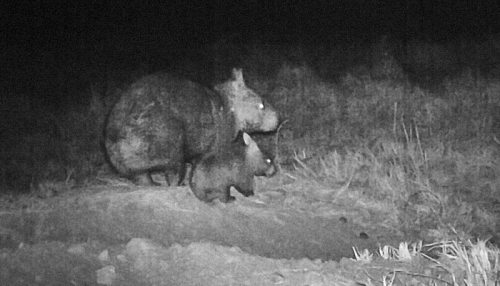The northern hairy-nosed wombat is one of the most endangered creatures in the world, ranked as critically endangered. In the 1980s, the estimated number of surviving wombats was as low as 35 before a breeding and protection program gradually increased the population. Still, wombats are slow breeders (each fertile female will have no more than 1 baby wombat, known as a joey, every 2-3 years) and by 2003, there was still only estimated to be 113 wombats, including 30 fertile females. All these wombats were in a single location: Epping Forest National Park in northern Queensland, Australia. This concentration made the wombat vulnerable to being made extinct in a single stroke if a natural disaster hit the park, and one only needs to remember the gigantic floods which covered Queensland in January this year for a reminder of how easily that could occur.
Accordingly, scientists involved in the protection of the northern hairy-nosed wombat decided to take the risk of relocating a breeding population of the wombats to the specially created Richard Underwood Nature Reserve, nearly 1000km to the south. Fifteen wombats (6 male and 9 female) were flown south during 2009 and 2010 and gradually introduced into a sheltered man-made burrow system built to mimic the burrow systems dug over the decades at Epping Forest. Thankfully, the relocated wombats quickly became comfortable with their new homes and in March-April this year two of the female wombats were confirmed as having become pregnant.
On 3 October, infrared cameras caught the first of the new joeys leaving the burrow for the first time with its mother:
Additional photos of the joey can be found at the Queensland Department of Environment and Resource Management website.
Meanwhile, the original Epping Forest colony is also prospering, thanks ironically to the flood rains which could so easily have devastated it. Wombats are encouraged to breed by heavy rains and vegetation growth, and discouraged by droughts. While the long droughts in Australia in the past 15 years have greatly slowed efforts to recover numbers of the northern hairy-nose, the rains of last summer have turned into a baby boom in the months since.
The northern hairy-nose wombat is still on the critically endangered list for now, but perhaps it is now finally stepping back from the brink.
Photo and video credit: Queensland Department of Environment and Resource Management
